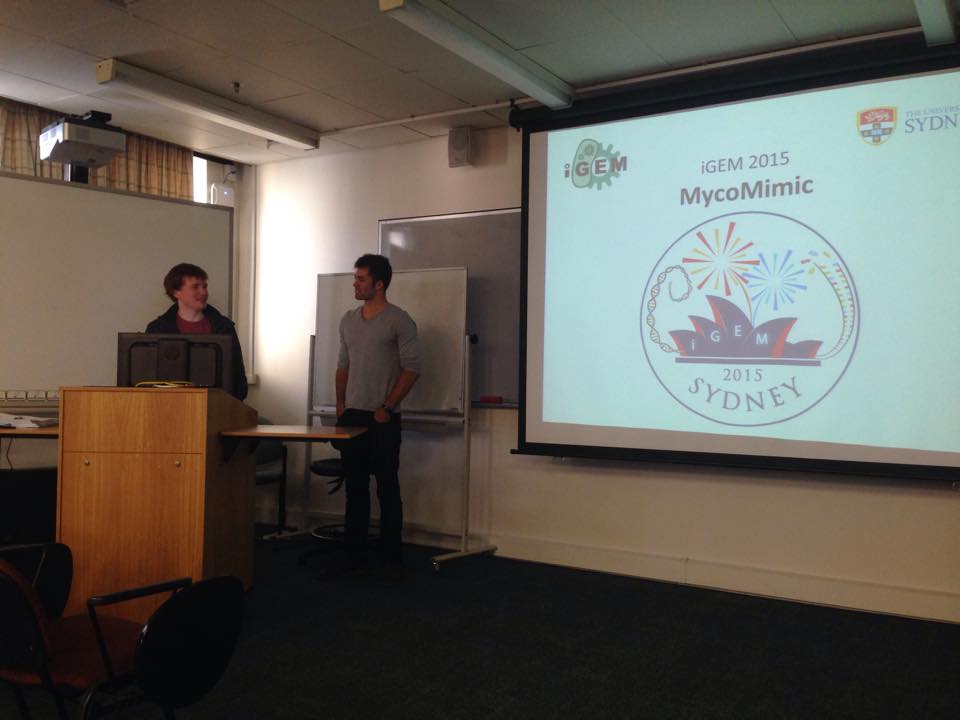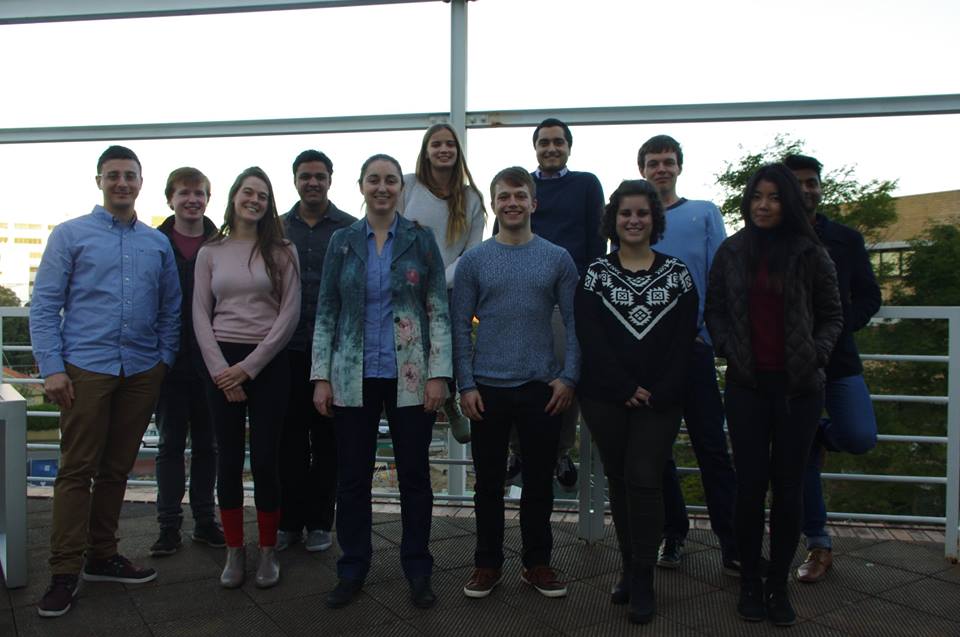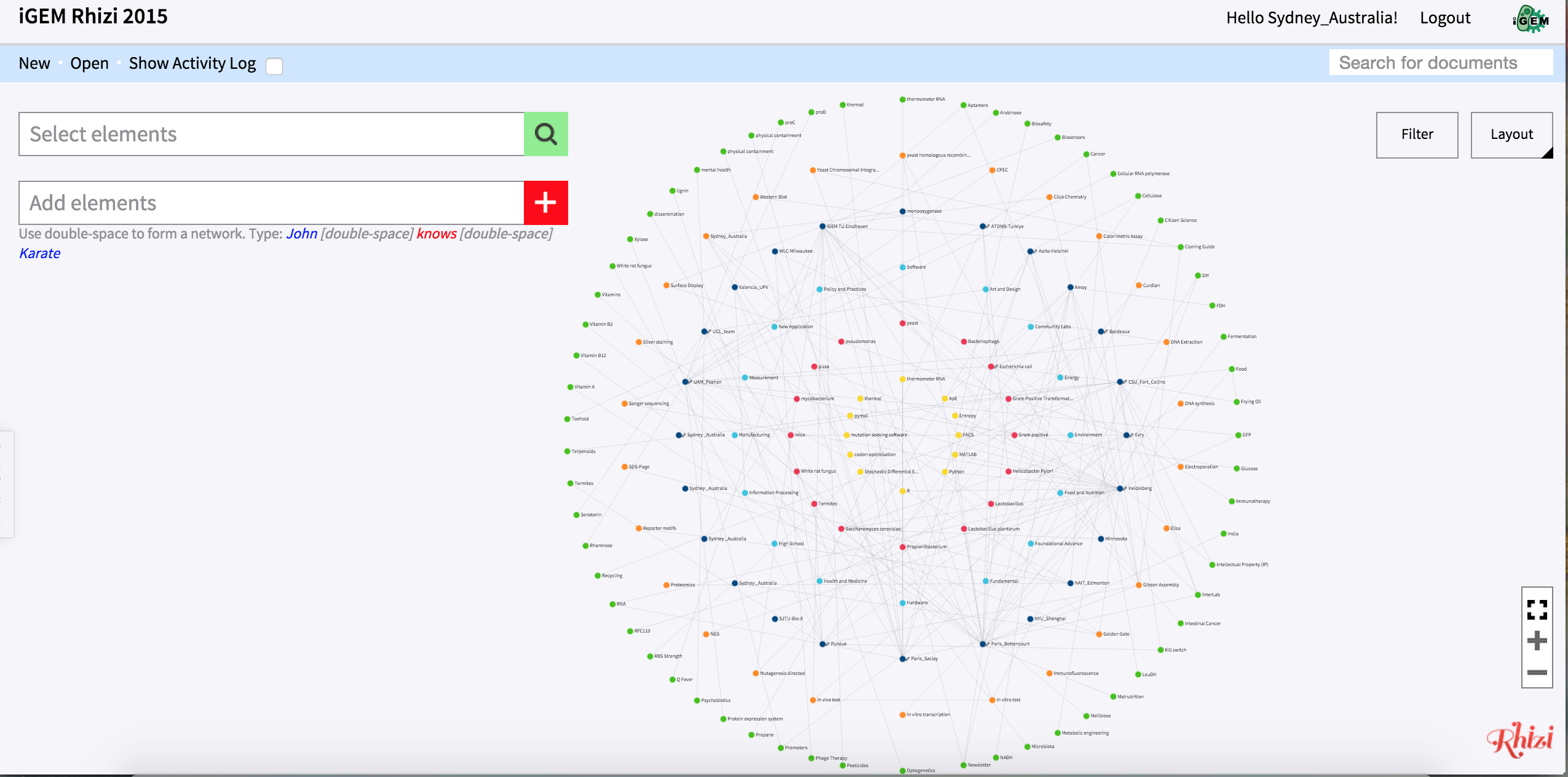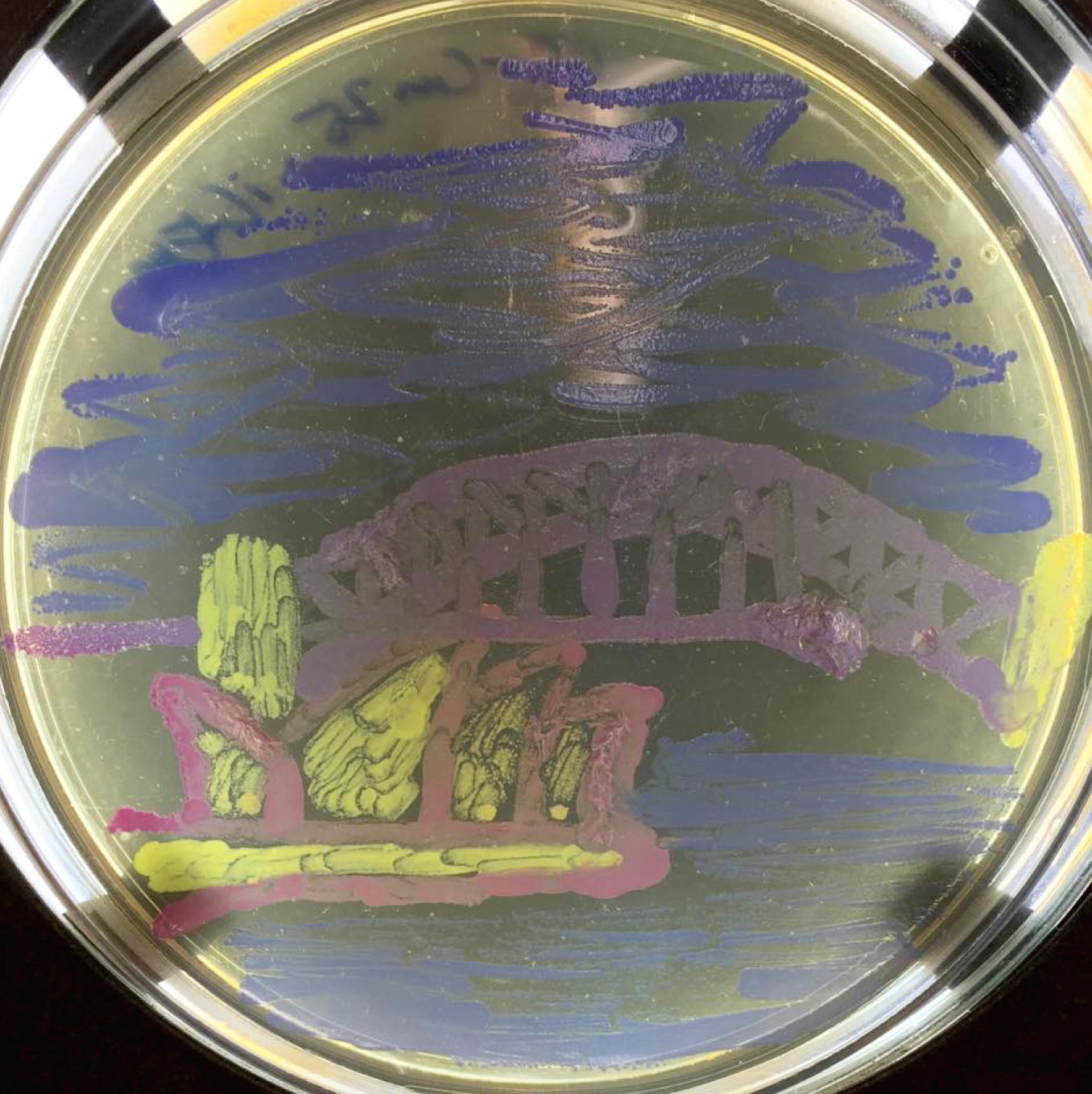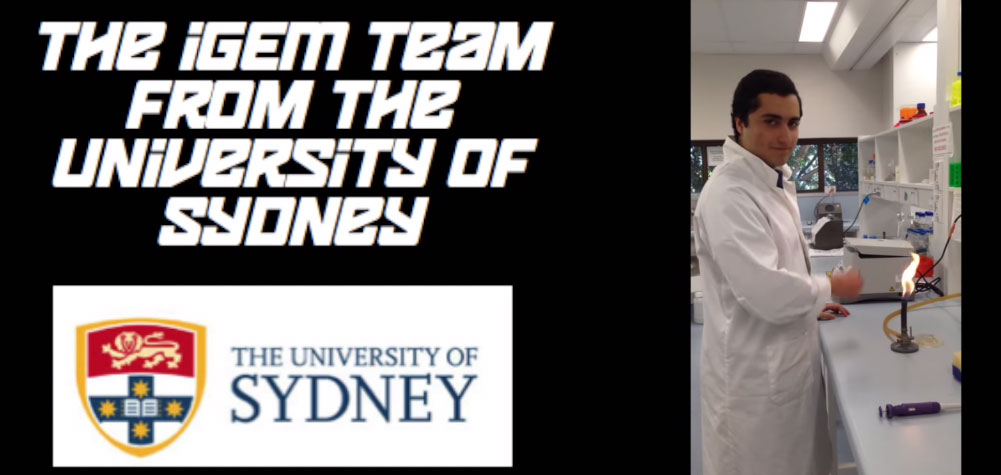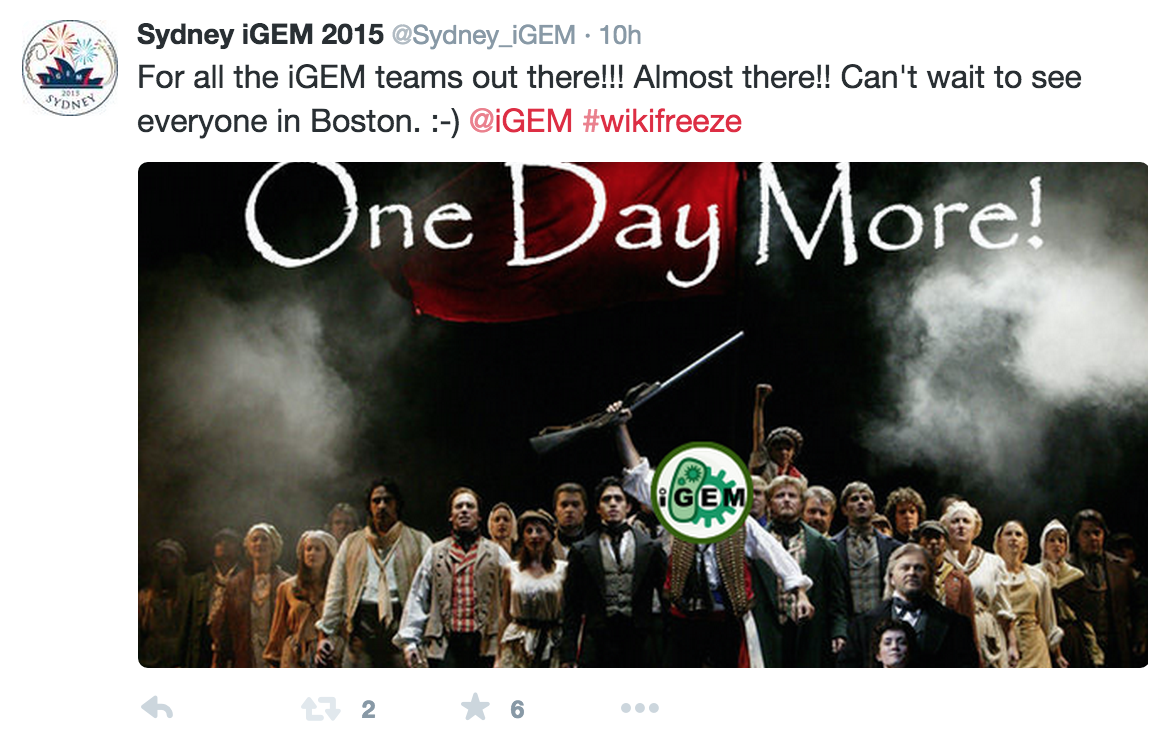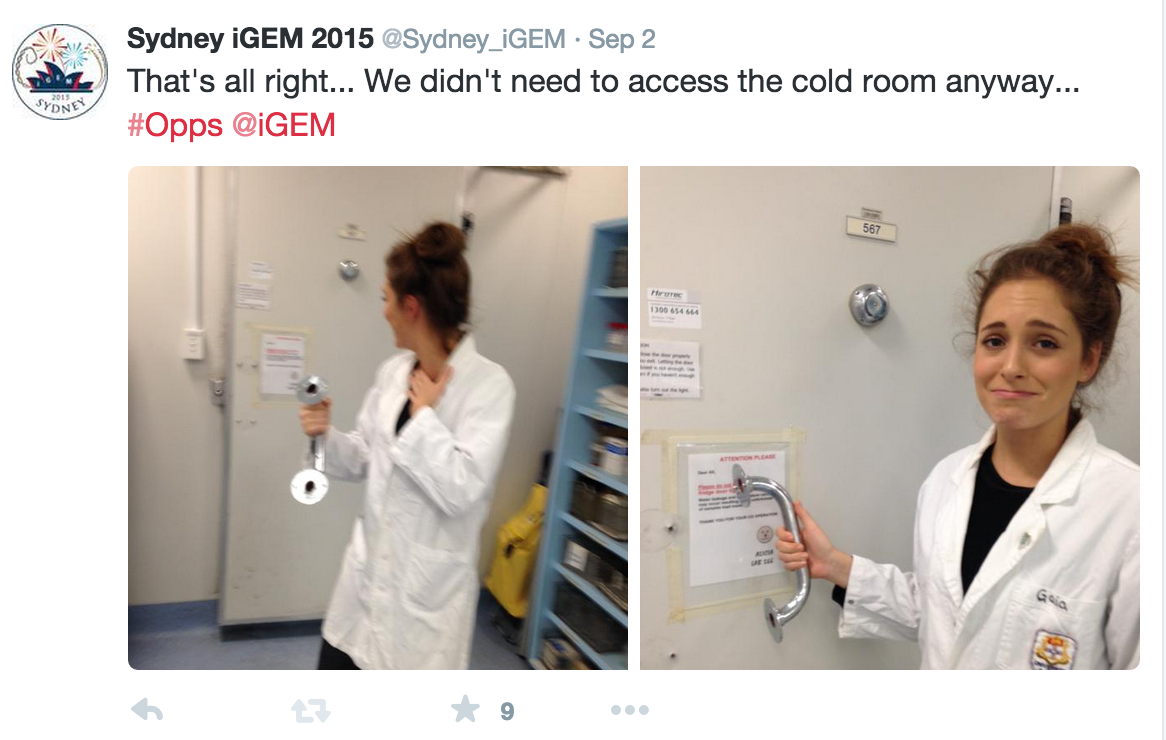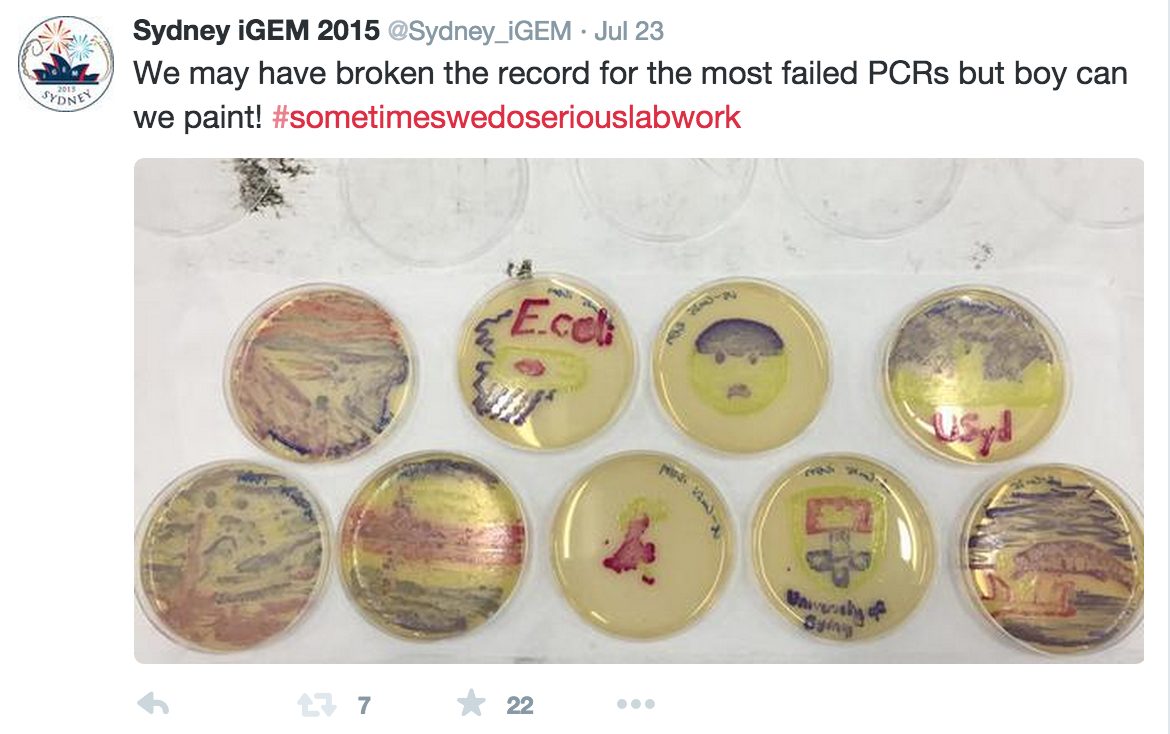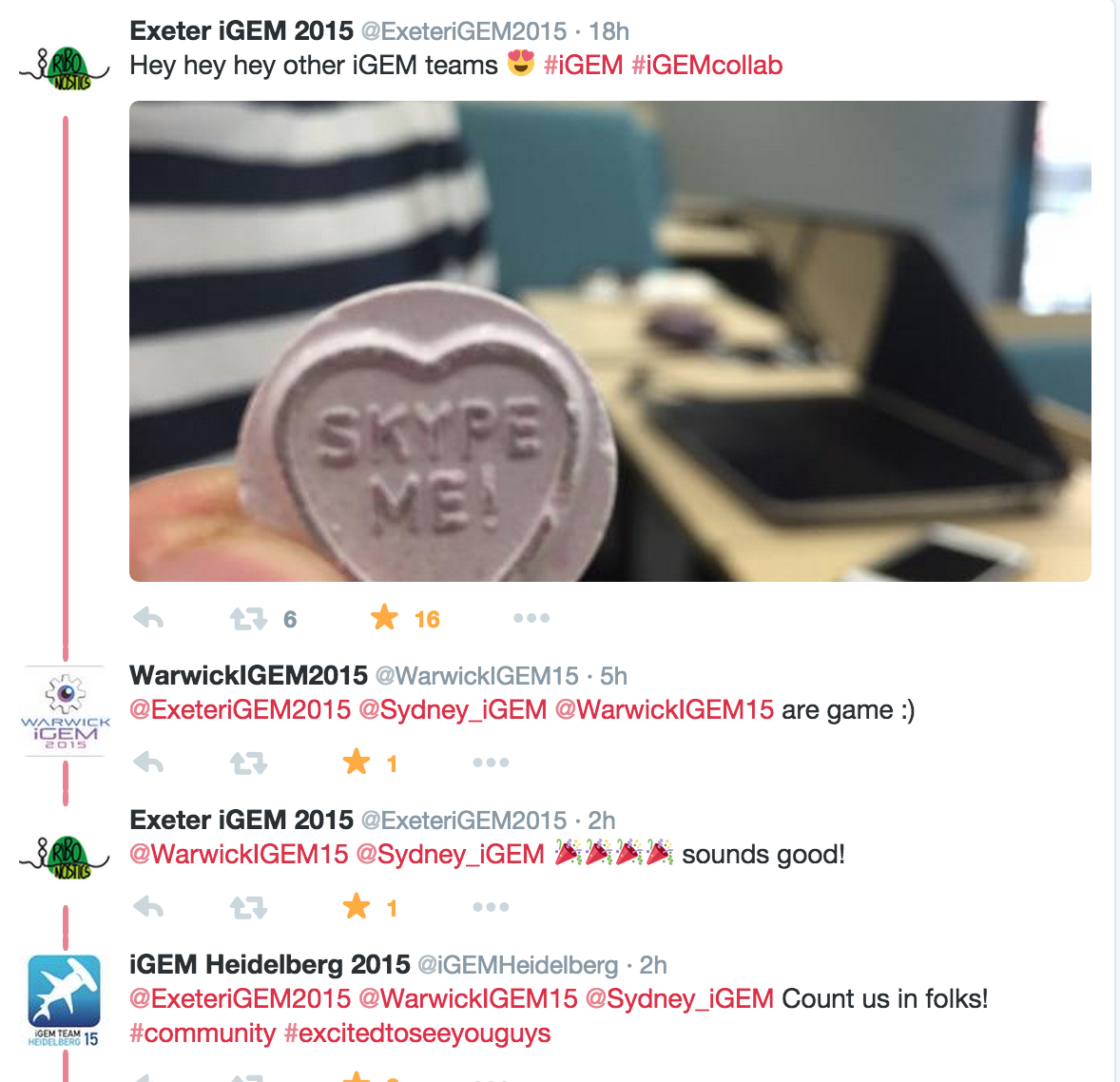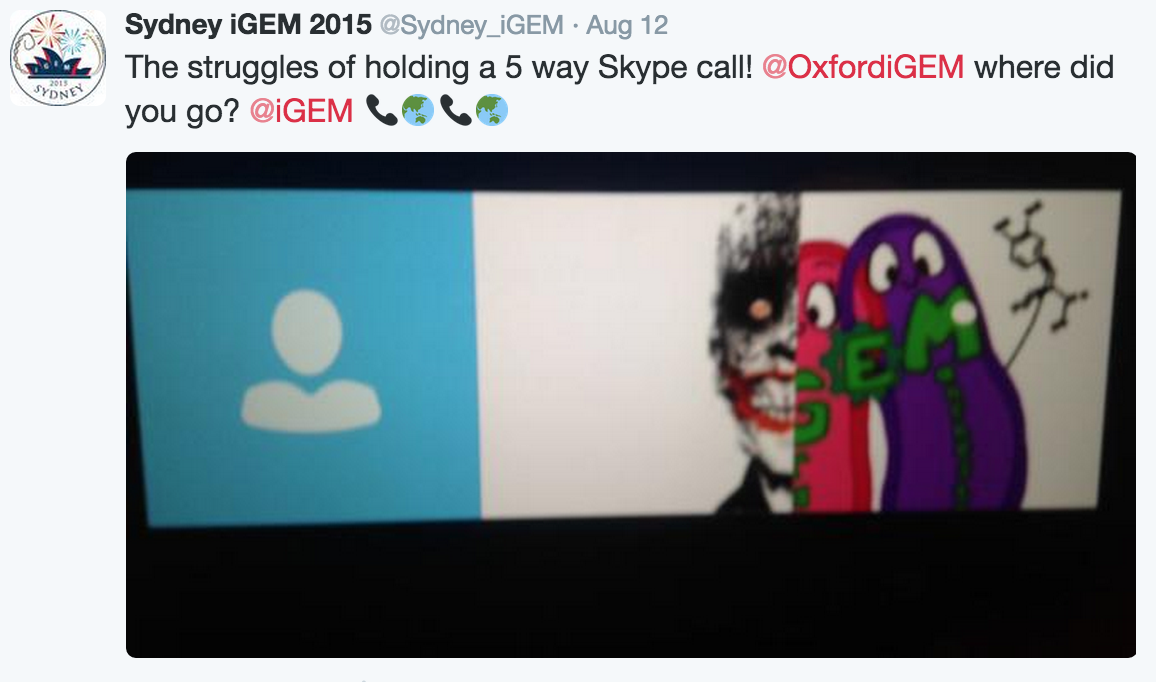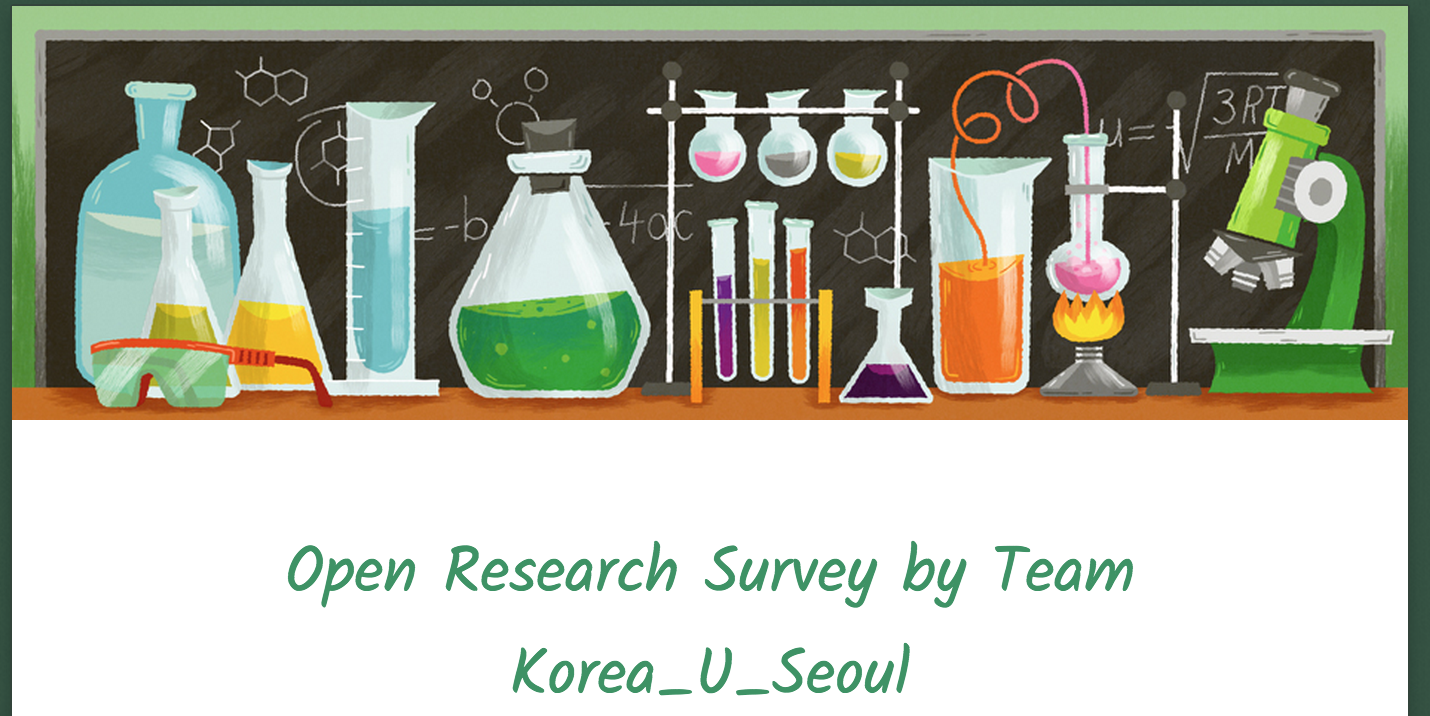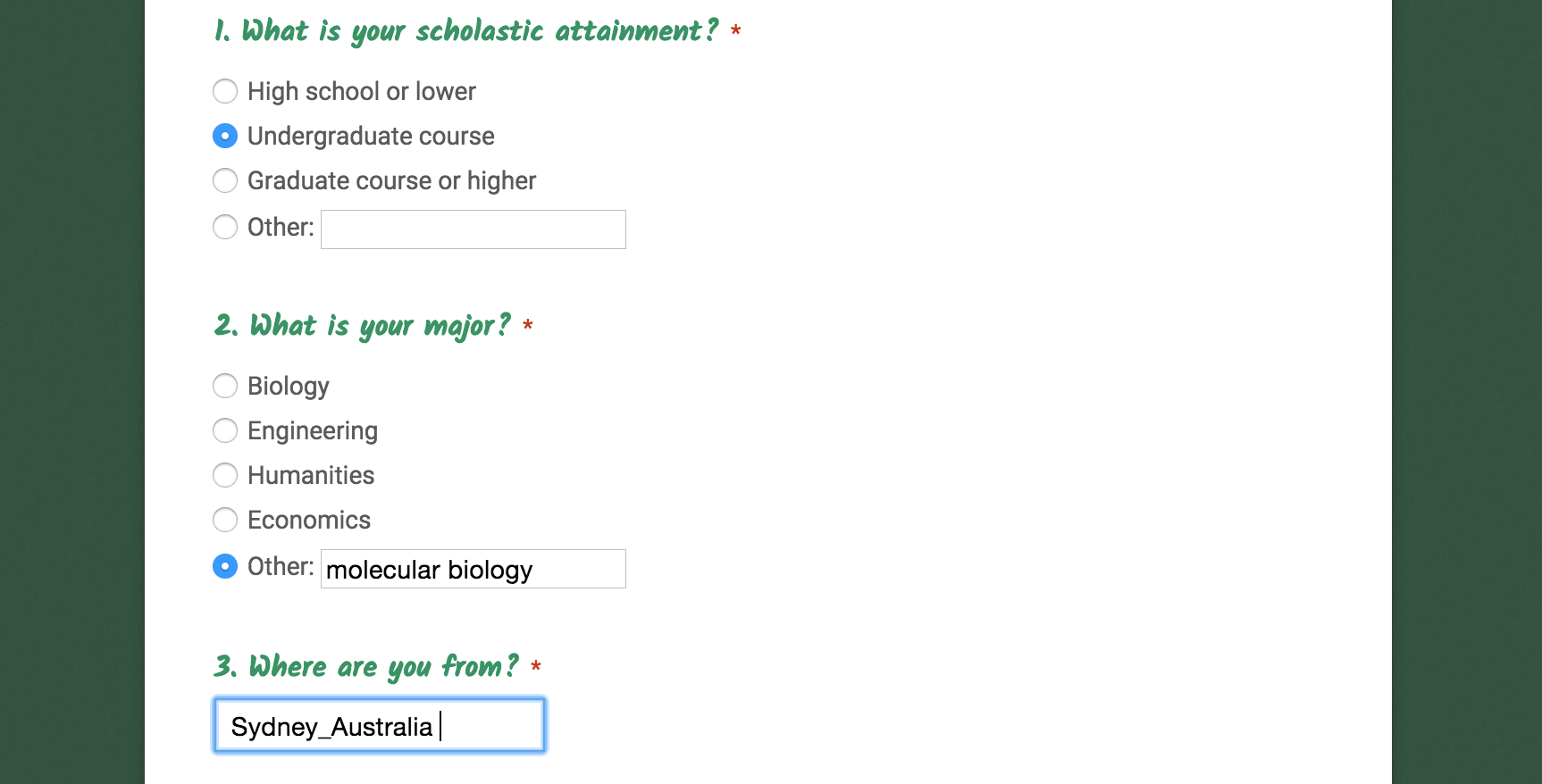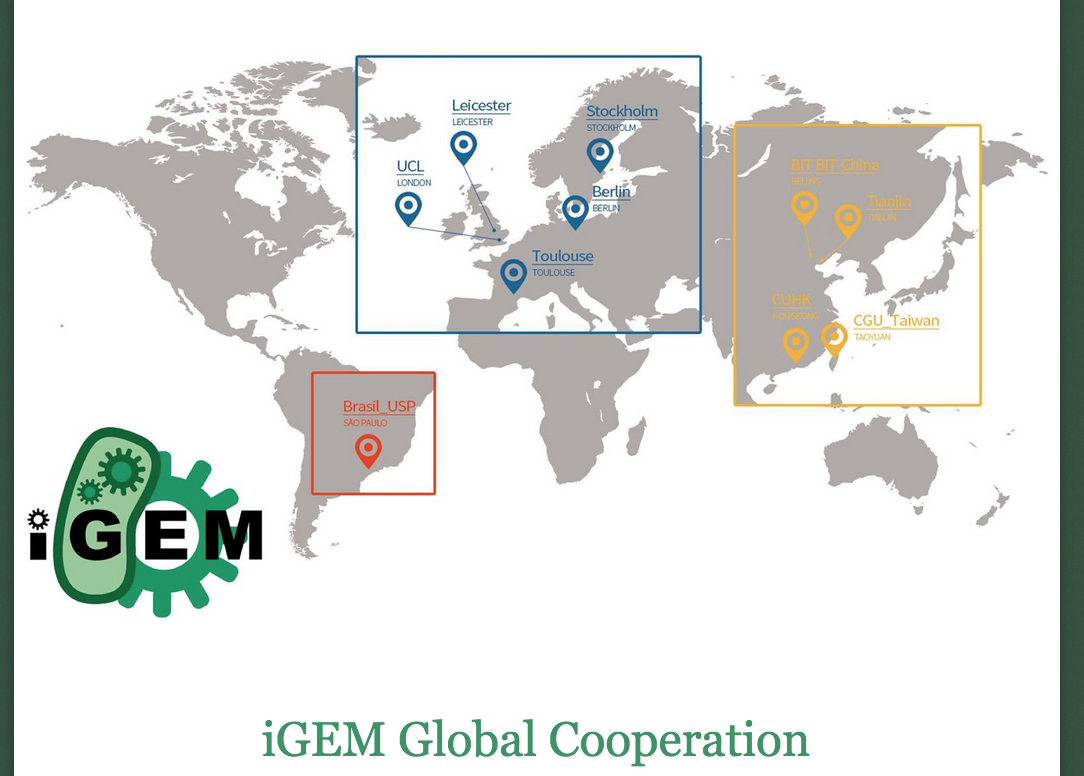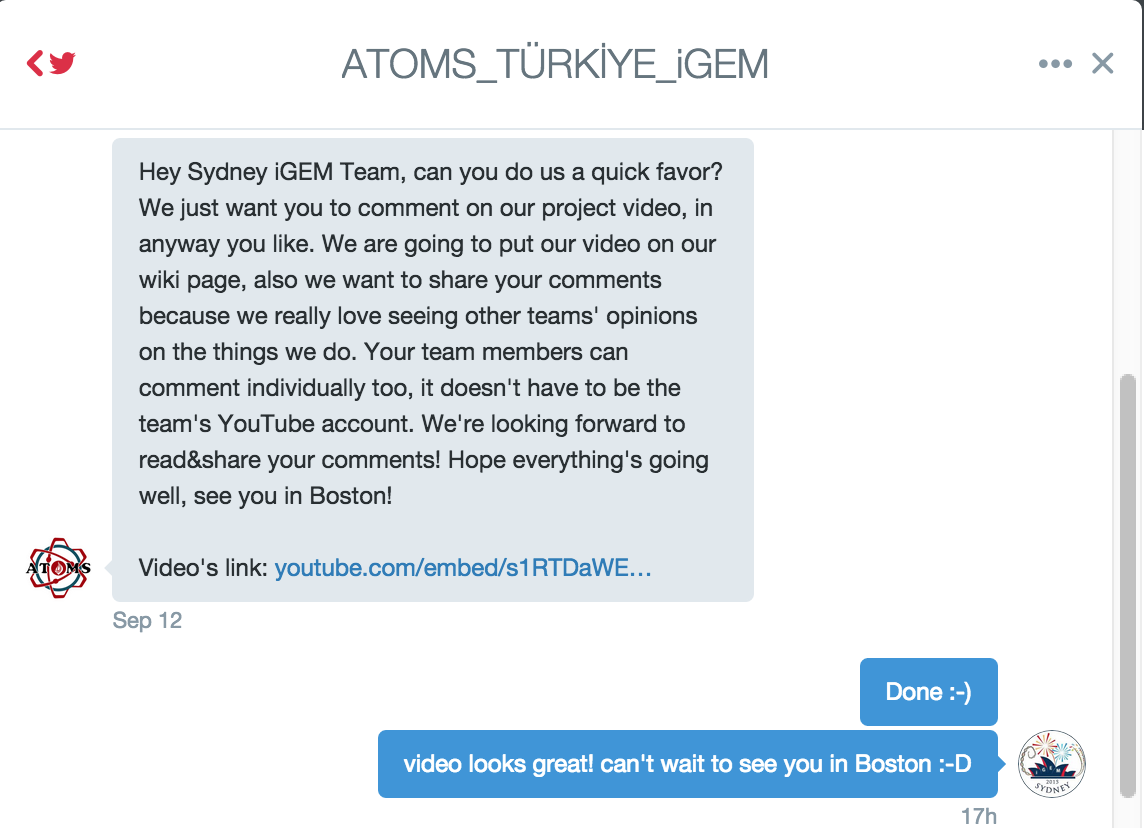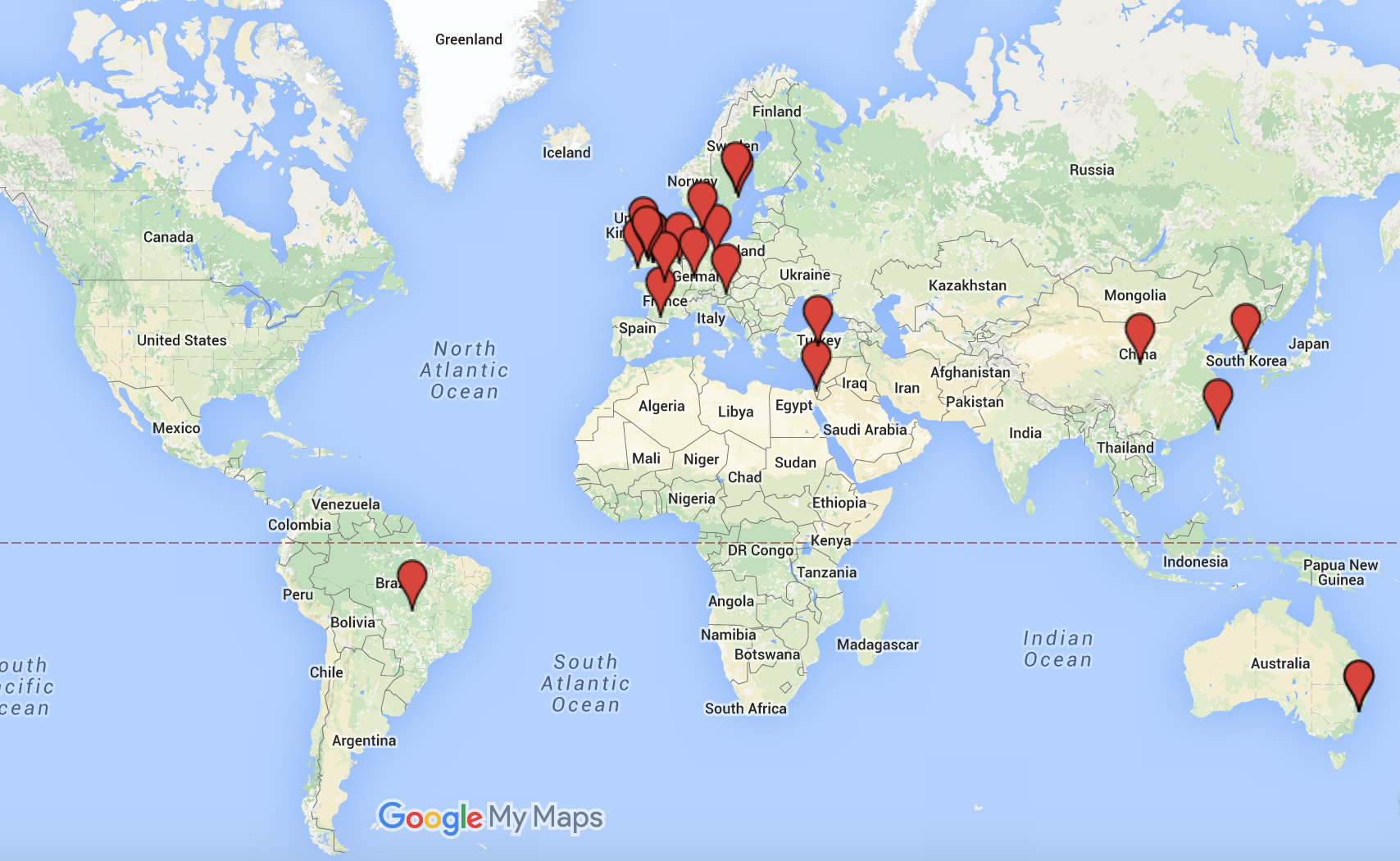Team:Sydney Australia/Collaborations
Improvement of pre-existing parts
We created a new part inspired and building on the function of the BBa_K1094400 part from the 2013 Copenhagen team, the BBa_K376004 part from the 2010 Penn State team, and the BBa_K660004 part from the 2011 Glasgow team. You can find the full method and results here.
Australian iGEM Meet Up
Thanks to the kind efforts of the University of New South Wales iGEM team, we met at their university with the iGEM teams from UNSW and Macquarie and collaboratively shared ideas by listening to the progress of each team. Ideas were exchanged and teams discussed potential avenues via which they could help each other with either research or outreach efforts. We were then treated with a good old Aussie BBQ and drinks and got to know each other better. We would like to thank UNSW iGEM 2015 again for organising the meet up and treating us with great food.
Eindhoven, Netherlands: Golden Gate Collaboration
We contributed to the Eindhoven cloning guide through submitting information on Golden Gate Cloning. This was a valuable experience as it allowed us to collaborate with other teams using the same protocol and share our knowledge. We are confident that the guide Eindhoven creates will be extremely useful, of an exceptionally high quality, and invaluable to future iGEM teams. You can see a summarised version of our Golden Gate contribution here.
ParisBettencourt, France: Rhizi platform
We, along with numerous other iGEM teams utilised Paris Bettencourt's Rhizi platform. This was extremly useful in finding other team working on similar projects or using similar techniques. We are thankful to the Bettencourt team for creating this platform and are sure it will be incredibly beneficial to future iGEM teams.
Uppsala, Sweden: Exchange of plasmids
We exchanged plasmids with the Uppsala Team: The Uppsala Team send us fluorescent chromoproteins and we sent them a plasmid expressing a DNA polymerase. We used the chromoproteins to create an Agar Plate Gallery which was extremely useful in outreach activities, helping to enhance school children's understanding of the capabilities and methods of genetic engineering. An example of our use of chromoproteins is below. Furthermore, the chromoproteins provided a useful positive control for fluorescence measurements in our work with the Bacillus subtilis flavin-binding fluoroprotein.
Macquarie University, Australia: Contribution to "So you think you can synthesise"
A video we created of our team hard at work was featued in Episode Three of "So you think you can synthesise", where we transformed the Green Flourescent Protein and our results were compared to that of Oxford, BirkBeck, and Linkoping teams. You can watch the full episode here.
Similar to Facebook, twitter was a great platform for discussing our project and communicating the advantages of synthetic biology. Majority of our followers on twitter were other iGEM teams. This was incredibly enjoyable as we were able to talk to other teams from across the world, see how they were going, and offer suport, opinions, and advice - as they did for us. Indeed, skpye calls with the iGEM teams from Oxford, Warwick, Exeter, Manchester-Graz, Heidelburg, and Danciger were the direct result of twitter interactions. We would like to thank all the iGEM teams and the iGEM HQ that communicated with us over twitter, shared jokes, memes, images, and progress - it certainly made this international competiton feel a lot more personal and social.
Below are some of our most successful tweets:
Danciger, Israel: Skype and mentoring
Our team Skyped with the High School Team from Danciger in Israel. It was a fantastic opportunity to discuss their project and give them some tips on outreach activities, and was incredible to see school students getting involved in iGEM!
Heidelburg + Exeter + Manchaster-Graz + Warwick + Oxford: Skype
The heading says it all - a large skype call with teams from across the world. We disucssed our project, outreach, team make up, and numerous other things (including social events in Boston). Despire the slow internet, it was fantastic meeting with everyone and helping each other in our projects.
University of Southern Denmark, Denmark: Survey
We participated in and helped spread the word about the USD's survey.
iGEM Global Coorporation Survey
We participated in and helped spread the word about the Global Coorporation Survey.
Northeast Foresty University, China: Survey
The NEFU iGEM team created a survey regarding the ease and speed of creating the wiki.
Seoul, Korea: Survey
We participated in the survey produced by the iGEM team from Seoul. This survey was on open source information and is used to assist the team in developing their "Gil" software.
ATOMS Turkey, Turkey: YouTube Video
We were engaged with the ATOMS Turkey's video on their project and commented on the video with our thoughts and ideas.
Conclusion
Through our collaborative efforts we were involved in the projects of 20 other iGEM teams who hail from 15 different nations, as mapped out in the figure below. Collaboration is an important part of iGEM: Through the global iGEM community huge undertakings such as the parts registry and annual Jamboree are achieved. We were overjoyed by the positivity we found whenever we got in contact with another team, and we believe that by continuing to strive to make the iGEM community an inclusive and supporting one, this competition can continue to move from strength to strength in the future.
In the the distant future we look forward to continued cooperation with our friends from international institutions, but in the near future we are looking forward to meeting them all in person at the Jamboree!

